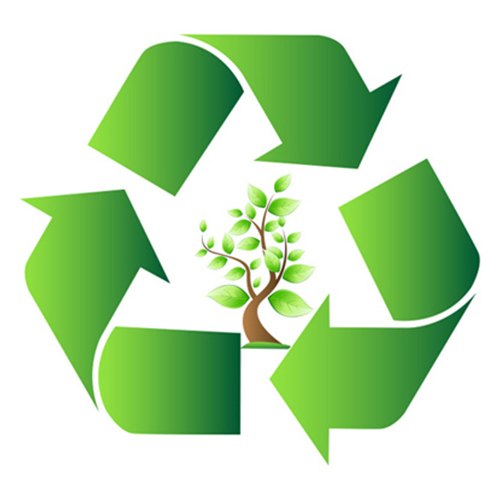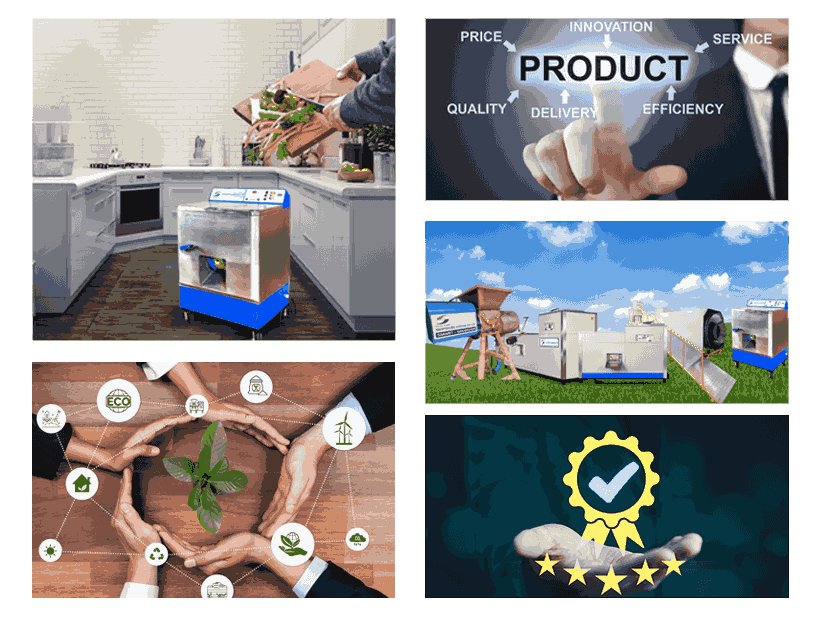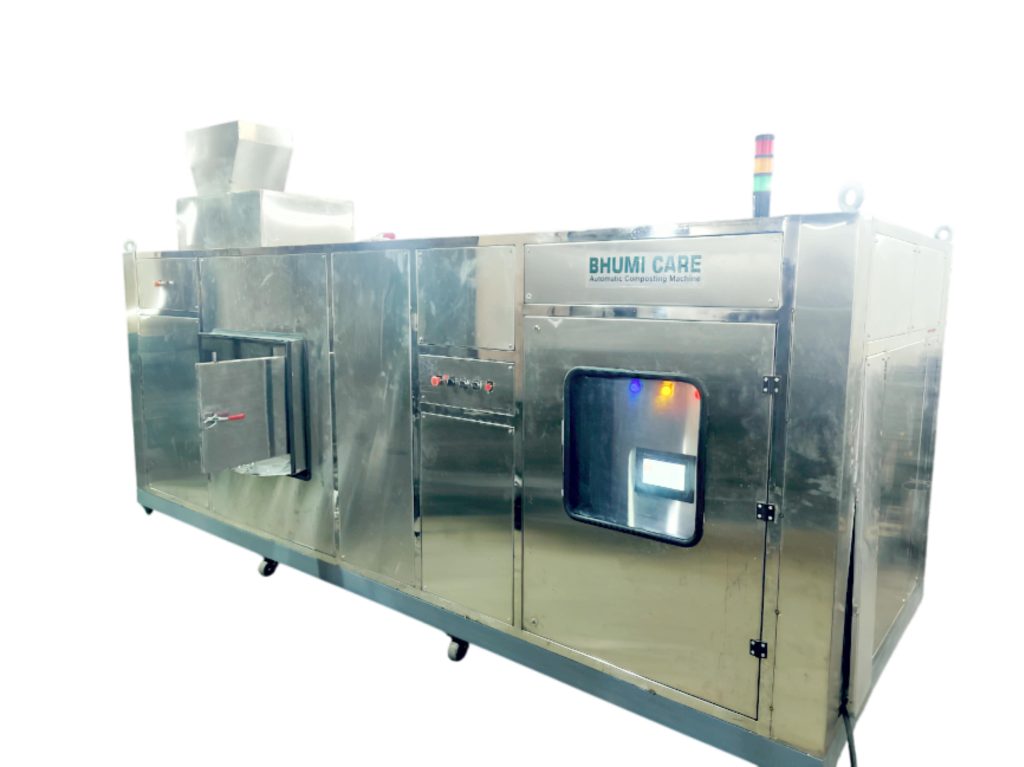Smart Features in Our Waste Management Machines
At Bhumicareowc, we deliver cutting-edge composting machines engineered for performance, precision, and sustainability. Our systems are built with validated science, smart automation, and reliable microbial processes to ensure nutrient-rich compost with minimal intervention.
Designed to meet the needs of residential complexes, hotels, industries, and institutions — our machines promise effortless waste conversion with unmatched efficiency.

Zero slurry commitment

24 Hours Fully Automatic Composting

Microbial Technology to ensure quality of Compost as per standards
Technology CSIR (Council of Scientific and Industrial Research) Validated

Odorless & Noiseless

PLC controls composting via heating, mixing, and ventilation.

OUR MINDSET IS GREEN. OUR MISSION IS SUSTAINABILITY
We are dedicated to developing reliable, efficient, and cost-effective food waste management solutions through advanced organic waste composting machines.
Our fully automatic composters are designed for both small- and large-scale operations, with systems capable of processing from 50 kg/day to 300 tons/day of organic waste. We offer a range of composting services tailored to meet your specific needs — helping you turn waste into a valuable resource while protecting the planet.
WHY CHOOSE US
🔧 Advanced Technology
Our composters and organic waste converters are equipped with cutting-edge technology that ensures rapid, efficient, and hygienic composting. Designed specifically for food and organic waste, they deliver consistent, high-performance results.
🌱 Eco-Friendly Solutions
We are committed to sustainability. Our machines significantly reduce landfill contributions by transforming organic waste into nutrient-rich compost — helping you make a positive impact on the environment.
📦 Versatile Product Range
From compact units for residential use to large-scale systems for commercial and industrial needs, our diverse range of composting solutions is tailored to suit every requirement.
✅ Proven Performance
Backed by years of industry expertise, our systems are trusted for their durability, efficiency, and proven results. Join a growing list of satisfied customers who rely on our technology.
🤝 Dedicated Customer Support
Our team is here to guide you — from selecting the right machine to ensuring smooth installation and operation. We offer responsive, end-to-end support for a worry-free experience.

Features of Bhumi Care OWC

- Customized Product
- Consumes 30–40% KW of Connected Load (note: "ONSUME" appears to be a typo for "CONSUMES")
- Noiseless Functioning
- Inbuilt Cutting Blades – SS304
- Intelligent Control or HMI
- Uniform Heating
- Tank & Shaft SS304
- Power Saving Technology
- Odorless, Rigid & Stable Design
- Imported Gear Box – For Durability
- Tower Indication with Trip Alarm
- Excellent Quality
Frequently Asked Questions.
What is Wet Waste / Organic Waste?
Organic waste, often referred to as wet waste, is material that is biodegradable and comes from nature, either a plant or an animal. Organic waste typically includes green waste, food waste, food-soiled paper, non-hazardous wood waste, green waste, and landscape and pruning waste. These materials are broken down by other organisms over time, making them ideal for composting. Using an organic waste composter machine or a food waste compost machine can efficiently convert these materials into compost.
What can go into the machines?
All types of biodegradable material can be processed in the machines, including tender coconuts, watermelon shells, corn bases, and non-veg bones. Using a food waste compost machine or an organic waste compost machine ensures efficient composting of these materials.
What is Dry Waste?
Dry waste, also known as inorganic or non-biodegradable waste, includes materials that do not rot or disintegrate over time. Examples of dry waste include paper, plastics, metal, glass, rubber, thermocol, Styrofoam, fabric, leather, rexine, and wood. These materials can be kept for extended periods without decomposing and typically require different handling than organic waste. Segregating dry waste and using a compost machine for home to manage wet waste can significantly reduce landfill contributions.
Is shredder important?
Yes, shredding is a crucial step in the composting process. Shredding helps in volume reduction and accelerates the biological decomposition process. A shredder breaks the waste into small particles, increasing the surface area for bacteria to act on. Smaller particles speed up the composting process by significantly reducing the heat requirement for dehydration. The compost produced is much finer and of higher quality due to the shredder. Additionally, the need for segregation of soft wet waste and hard wet waste is minimized in systems with a shredder, making the process more efficient. Using a compost maker machine with an integrated shredder can enhance the composting efficiency.
Why does the waste segregation at source is important? Why should I segregate the waste?
Waste segregation at source is crucial for several reasons:
- Public Health: Protects the health of waste handlers and ragpickers.
- Landfill Reduction: Minimizes waste sent to landfills by enabling efficient use of composting machines.
- Pollution Reduction: Decreases air and water pollution.
- Recycling Efficiency: Prevents contamination of dry waste by wet waste, reducing recycling costs. Using a food composter machine can aid in the efficient segregation and processing of organic waste.
What cannot go into the machine?
Non-biodegradable materials like paper, plastics, metal, glass, rubber, thermocol, Styrofoam, fabric, leather, rexine, etc., should not be placed in composting machines. These materials do not decompose and can damage the composting process.
What is the difference between anaerobic and Aerobic composting?
Aerobic Composting: Involves the decomposition of organic matter using microorganisms that require oxygen. The by-products are heat, water, and CO2, which is less harmful to the environment. This process produces enough heat to kill harmful bacteria and pathogens and supports the growth of beneficial bacteria. Using an aerobic composting machine can complete the process in 8-10 days with no leachate produced. Anaerobic Composting: Involves decomposition using microorganisms that do not require oxygen, producing methane and strong odors. This process generates less heat, takes longer, and often requires additional aerobic composting to stabilize the material. Anaerobic systems might produce a sludge-like material that is harder to break down. Using a compost making machine designed for anaerobic composting can help manage these challenges.
What are benefits of composting?
Composting offers numerous benefits:
- Soil Enrichment: Improves soil quality, helping retain moisture and suppress plant diseases and pests.
- Reduces Chemical Use: Decreases the need for chemical fertilizers.
- Supports Beneficial Microorganisms: Encourages the growth of bacteria and fungi that create humus, a nutrient-rich material.
- Reduces Methane Emissions: Lowers methane emissions from landfills, reducing your carbon footprint. Using a composting machine for home can make composting accessible and convenient.
Is there any alternative for saw dust?
Dry garden waste can be used as an alternative to sawdust. But its required quantity may be more than the saw dust.
What if any non-biodegradable material goes inside the machine?
Non-biodegradable materials should be avoided in the machine. Polythene or plastic paper may wrap around the shredder blades, mixing arms, and shafts, while hard metal parts may block the blades. Ensuring only biodegradable materials are used in the composting machine for home or a commercial waste composting machine prevents damage and inefficiencies.
How Should I Segregate the Waste? How to Do Waste Segregation?
Separate Containers: Keep distinct containers for dry and wet waste in the kitchen.
Clean and Dry: Ensure plastic waste is clean and dry before placing it in the dry waste bin. Rinse glass and plastic containers to remove food residue. Utilizing a waste composting machine for organic waste can streamline this process.
What are the stages of composting process? What happens in composting process?
Under ideal conditions, composting proceeds through three major phases:
- Mesophilic Phase: Initial decomposition occurs under moderate temperatures by mesophilic microorganisms, generating heat and quickly raising temperatures above 40°C.
- Thermophilic Phase: As temperatures rise, thermophilic bacteria take over, breaking down proteins, fats, and complex carbohydrates under high temperatures. Techniques like aeration and turning the compost help maintain temperatures below 65°C and provide oxygen for these microorganisms.
- Maturation Phase: As high-energy compounds dwindle, temperatures decrease, and mesophiles predominate again, finishing the breakdown of organic matter into usable humus. Using a bio compost machine or compost maker machine helps manage these phases effectively.
What is the process of composting?
Composting involves the biological decomposition of organic waste, such as food or plant material, by bacteria, fungi, worms, and other organisms under controlled aerobic conditions. This process recycles organic materials, producing compost—a valuable soil conditioner. Finished compost is dark, crumbly, and has a pleasant earth-like smell. Using a compost maker machine or a bio compost machine can facilitate this process efficiently.
Can bones be decomposed in the machine?
Scientifically, bones take years to decompose. However, with an inbuilt shredder, the bones are broken into small pieces, increasing the surface area, but they cannot be fully decomposed. Utilizing a food composter machine helps manage bone waste more efficiently.
Does the coconut shell decompose in the machine?
Coconut shells are hard materials that take a long time to decompose and cannot be fully decomposed within the 10-12 day cycle of the machine. An organic waste composter machine can help manage coconut shells, but complete decomposition requires more time.
What can I do with the compost?
The compost can be used in several ways:
- Gardens: Use it as a soil nutrient for gardens on the premises.
- Donation: Donate to nearby nurseries or farmers to contribute to the nation’s development.
- Local Collection: A local government body may collect the compost depending on your location. Using a compost machine for home or a commercial composting machine makes this process easier.
What is the quantity of compost produced per day?
Typically, 10% to 30% of the organic waste input is converted to compost using a compost machine. This conversion rate can vary depending on the type of organic waste composter machine used.
Which types of machines are available for composting?
There are three types of composting machines available:
- Smart Batch Composter + Curing System: Available in manual and semi-automatic versions.
- Smart Drum Composter: An automatic composting machine.
- Smart Xpress Composting Machines: Fully automatic composting machines designed for rapid processing of organic waste.